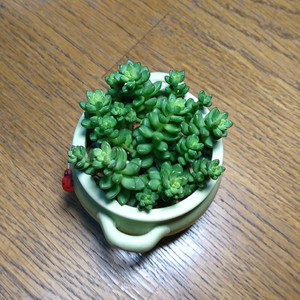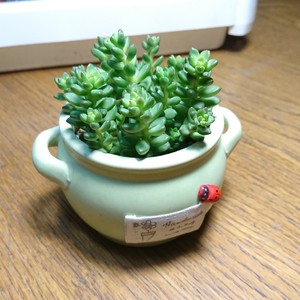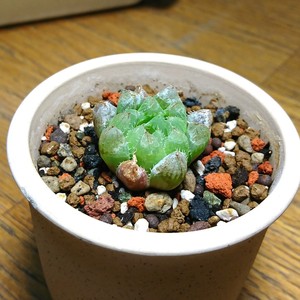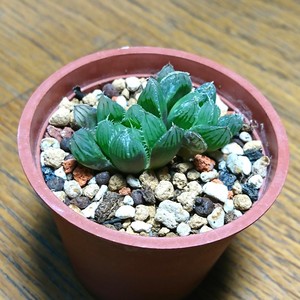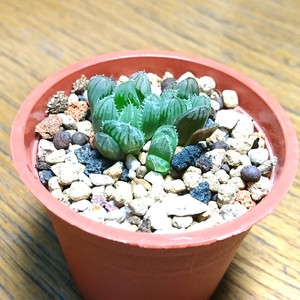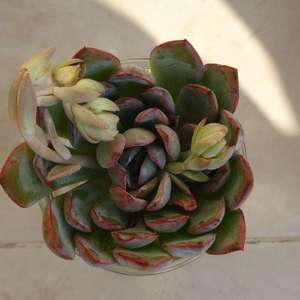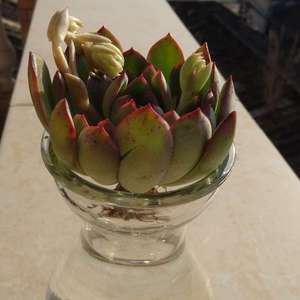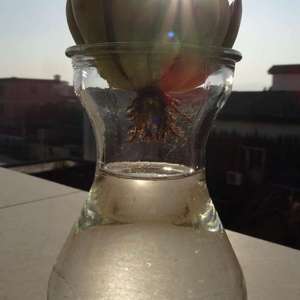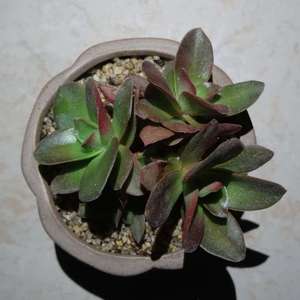文章
Miss Chen
2018年06月15日

Description: This perennial plant is 3-6' tall, branching sparingly. The stems are terete and glabrous. The alternate leaves are up to 6" long and 4" across (excluding the petioles); they are usually divided into 3-5 pointed lobes and their margins are serrate-crenate. Leaves with 3 lobes resemble a medieval halberd because the middle lobe is much longer than the 2 lateral lobes. Leaves with 5 lobes have the shape of a maple leaf. Some of the leaves may be unlobed; they are lanceolate to ovate in shape. The leaves are glabrous and their venation is partially palmate. The petioles are long and slender. The upper stems terminate in either a solitary or small cluster of flowers.
Each flower is up to 5" across when fully open, consisting of 5 rounded petals, a columnar reproductive structure, and a green calyx with 5 oval lobes. The petals are pink to nearly white. The reproductive column consists of whorled stamens and a divided style at its tip. The throat of the flower is reddish purple. Around the base of the calyx, there are several linear bracts. The blooming period occurs from mid- to late summer, lasting about 1 month. Each flower lasts only a single day. The rather large seeds are finely hairy and irregularly shaped – they tend to be flat-sided and reniform, but this is not always the case. Their fine hairs are white or brown. The seeds are light for their size, and probably distributed by movement of water. The root system consists of a taproot. This plant spreads by reseeding itself.

Cultivation: The preference is full or partial sun, fertile soil, and wet conditions. Flowers require exposure to sunlight to open up properly. This wetland species doesn't like to dry out.
Range & Habitat: The native Halberd-Leaved Rose Mallow has been observed in most areas of Illinois, except for extreme northern Illinois and some south central areas of the state (see Distribution Map). Habitats include marshes, swamps, low areas along rivers and ponds, and soggy islands in the middle of rivers or ponds. It is not often found in highly disturbed areas, and doesn't compete well against the invasive Salix interior (Sandbar Willow).

Faunal Associations: The nectar and pollen of the flowers attract bumblebees and an oligolectic bee, Ptilothrix bombiformis. Another common floral visitor, Melitoma taurea, is oligolectic on Ipomoea spp. (Morning Glory), but it is attracted to the large funnelform flowers of other plants. Some insects feed destructively on Hibiscus spp. (Rose Mallow). Caterpillars of the butterfly, Strymon melinus (Gray Hairstreak), feed on the flower buds and developing seeds, while caterpillars of the butterfly, Vanessa cardui (Painted Lady), feed on the foliage, as do caterpillars of Pyrgus communis (Checkered Skipper). Larvae of such moths as Eudryas unio (Pearly Wood Nymph), Anomis erosa (Yellow Scallop Moth), Automeris io (Io Moth), and Acontia delecta (Delightful Bird-Dropping Moth) also feed on these plants; the latter moth is found south of Illinois, however.

Other insect feeders include the flea beetle Chaetocnema quadricollis, larvae of the sawfly Atomacera decepta, the jewel beetle Paragrilus tenuis, adults of Popillia japonica (Japanese Beetle), and some aphid species. Deer and livestock will eat the non-toxic foliage of native Hibiscus spp. readily. However, the introduced shrub, Hibiscus syriacus (Rose-of-Sharon), which is often planted in yards, is apparently more resistant to browsing by deer than the native Hibiscus spp.
Photographic Location: Along a large drainage ditch at the Windsor Road Prairie in Champaign, Illinois, where this species was introduced.

Comments: Halberd-Leaved Rose Mallow has large beautiful flowers that can be seen from a distance. Other native Hibiscus spp. in Illinois include Hibiscus moscheutos (Swamp Rose Mallow) and Hibiscus lasiocarpus (Hairy Rose Mallow). Halberd-Leaved Rose Mallow can be distinguished by its lobed leaves, as the latter two species have unlobed leaves that are oval-ovate in shape. While Halberd-Leaved Rose Mallow has hairless leaves and hairy seeds, Swamp Rose Mallow and Hairy Rose Mallow have hairy leaf undersides and hairless seeds! All of these species have similar flowers and they prefer similar wetland habitats, although Hairy Rose Mallow has a more southern distribution within the state. A scientific synonym of the Halberd-Leaved Rose Mallow is Hibiscus militaris.
Each flower is up to 5" across when fully open, consisting of 5 rounded petals, a columnar reproductive structure, and a green calyx with 5 oval lobes. The petals are pink to nearly white. The reproductive column consists of whorled stamens and a divided style at its tip. The throat of the flower is reddish purple. Around the base of the calyx, there are several linear bracts. The blooming period occurs from mid- to late summer, lasting about 1 month. Each flower lasts only a single day. The rather large seeds are finely hairy and irregularly shaped – they tend to be flat-sided and reniform, but this is not always the case. Their fine hairs are white or brown. The seeds are light for their size, and probably distributed by movement of water. The root system consists of a taproot. This plant spreads by reseeding itself.

Cultivation: The preference is full or partial sun, fertile soil, and wet conditions. Flowers require exposure to sunlight to open up properly. This wetland species doesn't like to dry out.
Range & Habitat: The native Halberd-Leaved Rose Mallow has been observed in most areas of Illinois, except for extreme northern Illinois and some south central areas of the state (see Distribution Map). Habitats include marshes, swamps, low areas along rivers and ponds, and soggy islands in the middle of rivers or ponds. It is not often found in highly disturbed areas, and doesn't compete well against the invasive Salix interior (Sandbar Willow).

Faunal Associations: The nectar and pollen of the flowers attract bumblebees and an oligolectic bee, Ptilothrix bombiformis. Another common floral visitor, Melitoma taurea, is oligolectic on Ipomoea spp. (Morning Glory), but it is attracted to the large funnelform flowers of other plants. Some insects feed destructively on Hibiscus spp. (Rose Mallow). Caterpillars of the butterfly, Strymon melinus (Gray Hairstreak), feed on the flower buds and developing seeds, while caterpillars of the butterfly, Vanessa cardui (Painted Lady), feed on the foliage, as do caterpillars of Pyrgus communis (Checkered Skipper). Larvae of such moths as Eudryas unio (Pearly Wood Nymph), Anomis erosa (Yellow Scallop Moth), Automeris io (Io Moth), and Acontia delecta (Delightful Bird-Dropping Moth) also feed on these plants; the latter moth is found south of Illinois, however.

Other insect feeders include the flea beetle Chaetocnema quadricollis, larvae of the sawfly Atomacera decepta, the jewel beetle Paragrilus tenuis, adults of Popillia japonica (Japanese Beetle), and some aphid species. Deer and livestock will eat the non-toxic foliage of native Hibiscus spp. readily. However, the introduced shrub, Hibiscus syriacus (Rose-of-Sharon), which is often planted in yards, is apparently more resistant to browsing by deer than the native Hibiscus spp.
Photographic Location: Along a large drainage ditch at the Windsor Road Prairie in Champaign, Illinois, where this species was introduced.

Comments: Halberd-Leaved Rose Mallow has large beautiful flowers that can be seen from a distance. Other native Hibiscus spp. in Illinois include Hibiscus moscheutos (Swamp Rose Mallow) and Hibiscus lasiocarpus (Hairy Rose Mallow). Halberd-Leaved Rose Mallow can be distinguished by its lobed leaves, as the latter two species have unlobed leaves that are oval-ovate in shape. While Halberd-Leaved Rose Mallow has hairless leaves and hairy seeds, Swamp Rose Mallow and Hairy Rose Mallow have hairy leaf undersides and hairless seeds! All of these species have similar flowers and they prefer similar wetland habitats, although Hairy Rose Mallow has a more southern distribution within the state. A scientific synonym of the Halberd-Leaved Rose Mallow is Hibiscus militaris.
0
0
文章
Miss Chen
2018年06月14日

Description: This perennial plant is about 2-3' tall and unbranched or sparingly branched. The central stem is glabrous and either terete or 4-angled. Each pair of opposite leaves rotates 90° from the position of the pair of leaves immediately below. For var. linifolia of White Turtlehead, these leaves are less than ¾" across and they are linear-lanceolate in shape. However, the typical variety of White Turtlehead has some leaves greater than ¾" and they are lanceolate or oblong-lanceolate in shape. The leaves are hairless and finely serrated along their margins. At their bases, the leaves are sessile, or they have petioles that are less than ¼" in length. The central stem terminates in a dense spike of white flowers about 3-6" in length, blooming from the bottom to the top.
Each flower is about 1¼" long, consisting of a 2-lipped white corolla, a green calyx with 5 oval teeth, a slender white style, and 5 hairy stamens. Four of these stamens have fertile anthers, while the remaining stamen is sterile and green. The tubular corolla is somewhat flattened at the mouth, where it is more wide than tall. The upper lip of the corolla functions as a protective hood, while the lower lip has 2-3 shallow lobes and functions as a landing pad for visiting insects. The lower interior of the corolla has abundant white hairs. At the base of the calyx, there are a few green bracts that resemble the sepals. The blooming period occurs from late summer to fall and lasts about 1month. There is no noticeable floral scent. Each flower is replaced by an ovoid seed capsule containing several seeds that are flattened and broadly winged; these seeds can be blown about by the wind and probably float on water. The root system consists of a taproot and rhizomes. Vegetative colonies may form as a result of these rhizomes.
Cultivation: The preference is full or partial sun, wet to moist conditions, and a fertile soil containing some organic matter. Temporary flooding is tolerated. This plant can be maintained in gardens if it is watered during dry spells.

Range & Habitat: The native White Turtlehead occurs occasionally in central and northern Illinois, but it is rare in the southern part of the state (see Distribution Map). The typical variety of this species is more abundant than var. linifolia. Habitats include open woodlands in floodplain areas, thickets in floodplain areas, wet prairies, sedge meadows, seeps, springs, marshes, and fens. These habitats can be either sandy or non-sandy. White Turtlehead is an indicator plant of fens, where the ground water ranges from slightly acid to alkaline, but it occurs in other high quality wetland habitats as well.
Faunal Associations: The flowers are pollinated by nectar-seeking bumblebees; sometimes they also attract the Ruby-Throated Hummingbird. In the northern half of Illinois, White Turtlehead is the preferred host for caterpillars of the butterfly Euphydryas phaeton phaeton (Baltimore). This butterfly is fairly uncommon. Other insects that feed on the foliage of White Turtle include leaf-mining larvae of the flea beetle Diabolia chelones, larvae of the sawfly Tenthredo grandis, and larvae of the sawfly Macrophya nigra. The seeds are eaten by larvae of the fly Phytomyza chelonei and larvae of the polyphagous moth Endothenia hebesana, while larvae of Papaipema nepheleptena (Turtlehead Borer Moth) bore through the stems (Clark et al. 2004, Smith 2006, Eastman, 1995). The foliage is bitter and usually avoided by White-Tailed Deer and other mammalian herbivores.

Photographic Location: A prairie swale at Meadowbrook Park in Urbana, Illinois. In some photographs, the plants with yellow flowerheads in the background are Bidens polylepis.
Comments: The interesting flowers of this species resemble the head of a turtle, hence the common name. Because of these unique flowers, Chelone spp. (turtleheads) are easy to distinguish from other groups of plants. Among the turtleheads occurring in the Midwest, White Turtlehead is unique in having white flowers (although they are sometimes tinted light pink or pale purple). It also has more narrow leaves than other turtleheads, which is especially pronounced in var. linifolia, as illustrated in the photograph of the leaves. The other turtlehead species that occurs in Illinois, Chelone obliqua (Pink Turtlehead), has pink flowers and broader leaves with longer petioles (these petioles exceed ¼" in length). This species is uncommon and usually occurs in damp wooded habitats.
Each flower is about 1¼" long, consisting of a 2-lipped white corolla, a green calyx with 5 oval teeth, a slender white style, and 5 hairy stamens. Four of these stamens have fertile anthers, while the remaining stamen is sterile and green. The tubular corolla is somewhat flattened at the mouth, where it is more wide than tall. The upper lip of the corolla functions as a protective hood, while the lower lip has 2-3 shallow lobes and functions as a landing pad for visiting insects. The lower interior of the corolla has abundant white hairs. At the base of the calyx, there are a few green bracts that resemble the sepals. The blooming period occurs from late summer to fall and lasts about 1month. There is no noticeable floral scent. Each flower is replaced by an ovoid seed capsule containing several seeds that are flattened and broadly winged; these seeds can be blown about by the wind and probably float on water. The root system consists of a taproot and rhizomes. Vegetative colonies may form as a result of these rhizomes.
Cultivation: The preference is full or partial sun, wet to moist conditions, and a fertile soil containing some organic matter. Temporary flooding is tolerated. This plant can be maintained in gardens if it is watered during dry spells.

Range & Habitat: The native White Turtlehead occurs occasionally in central and northern Illinois, but it is rare in the southern part of the state (see Distribution Map). The typical variety of this species is more abundant than var. linifolia. Habitats include open woodlands in floodplain areas, thickets in floodplain areas, wet prairies, sedge meadows, seeps, springs, marshes, and fens. These habitats can be either sandy or non-sandy. White Turtlehead is an indicator plant of fens, where the ground water ranges from slightly acid to alkaline, but it occurs in other high quality wetland habitats as well.
Faunal Associations: The flowers are pollinated by nectar-seeking bumblebees; sometimes they also attract the Ruby-Throated Hummingbird. In the northern half of Illinois, White Turtlehead is the preferred host for caterpillars of the butterfly Euphydryas phaeton phaeton (Baltimore). This butterfly is fairly uncommon. Other insects that feed on the foliage of White Turtle include leaf-mining larvae of the flea beetle Diabolia chelones, larvae of the sawfly Tenthredo grandis, and larvae of the sawfly Macrophya nigra. The seeds are eaten by larvae of the fly Phytomyza chelonei and larvae of the polyphagous moth Endothenia hebesana, while larvae of Papaipema nepheleptena (Turtlehead Borer Moth) bore through the stems (Clark et al. 2004, Smith 2006, Eastman, 1995). The foliage is bitter and usually avoided by White-Tailed Deer and other mammalian herbivores.

Photographic Location: A prairie swale at Meadowbrook Park in Urbana, Illinois. In some photographs, the plants with yellow flowerheads in the background are Bidens polylepis.
Comments: The interesting flowers of this species resemble the head of a turtle, hence the common name. Because of these unique flowers, Chelone spp. (turtleheads) are easy to distinguish from other groups of plants. Among the turtleheads occurring in the Midwest, White Turtlehead is unique in having white flowers (although they are sometimes tinted light pink or pale purple). It also has more narrow leaves than other turtleheads, which is especially pronounced in var. linifolia, as illustrated in the photograph of the leaves. The other turtlehead species that occurs in Illinois, Chelone obliqua (Pink Turtlehead), has pink flowers and broader leaves with longer petioles (these petioles exceed ¼" in length). This species is uncommon and usually occurs in damp wooded habitats.
0
0
文章
Miss Chen
2018年06月12日

Description: This perennial plant is about ½–2' tall; it branches regularly. The stems are hairless and hollow. Basal leaves are produced early in the year, while alternate leaves are produced along the stems. The blades of these leaves are up to 4" long and 4" across; they are orbicular-cordate, finely crenate along the margins, and glabrous. Their venation is palmate. The petioles of the basal leaves are up to 6" long, while the petioles of the alternate leaves are shorter than this. The upper stems produce small clusters of bright yellow flowers on short petioles. Each flower spans about ¾–1½" across; it consists of 5-9 petal-like sepals, a thick ring of abundant stamens, and a cluster of carpels in the center. There are no true petals. The sepals are bright yellow, well-rounded, and slightly overlapping. The blooming period occurs during mid-spring and lasts about a month. There is no noticeable floral scent. Each of the carpels matures into a seedpod that contains several seeds. This seedpod is flattened and recurved; it splits open along the upper side to release the seeds (technically, it is a follicle). The root system consists of a short crown with fibrous roots. This plant spreads by reseeding itself. It occasionally forms loose colonies at favorable sites.
Cultivation: The preference is full or partial sun, wet conditions, and mucky soil. Shallow standing water is tolerated. Growth and development begin early in the year.
Range & Habitat: The native Marsh Marigold occurs primarily in central and northern Illinois, where it is occasional. In southern Illinois, it is uncommon or absent (see Distribution Map). This circumboreal species also occurs in Eurasia, where it is native as well. Habitats include various wetlands, including vernal pools in low woodlands, swamps, soggy meadows in river floodplains, marshes, fens, seeps and springs, and ditches. Marsh Marigold prefers sunny areas where the soil is consistently wet from underground seepage of water, although it occurs in other wetlands as well.
Faunal Associations: The nectar and pollen of the flowers attract flies and bees primarily. This includes Bombylius major (Giant Bee Fly), Syrphid flies, Halictid bees, honey bees, and others. Two leaf beetles are occasionally found on the foliage of Marsh Marigold: Plateumaris nitida and Hydrothassa vittata. It is possible that they eat the foliage. For other herbivores, specific information for Marsh Marigold is lacking. Because the acrid foliage contains toxic alkaloids and glycosides, it is usually avoided by mammalian herbivores. The seeds of plants in the closely related Ranunculus genus are eaten by the Wood Duck, Sora Rail, and some upland gamebirds. The seeds of such plants are also eaten by the Meadow Vole, Eastern Chipmunk, and other small rodents.

Photographic Location: Near the Collinson Marsh in Vermilion County. Several colonies of Marsh Marigold were growing in a ditch along a field where there was underground seepage of water from a neighboring bluff.
Comments: In sunny wetlands, Marsh Marigold is one of the first wildflowers to bloom during the spring. The flowers are showy and conspicuous because of their bright color and relatively large size. The foliage is an attractive bright green. This species is not a true marigold of the Aster family, in spite of its common name. Instead, it is closely related to the many Ranunculus spp. (Buttercups) that occur within the state. The various species of Buttercups have smaller flowers (less than ¾" across) and they usually bloom later in the year.
Cultivation: The preference is full or partial sun, wet conditions, and mucky soil. Shallow standing water is tolerated. Growth and development begin early in the year.
Range & Habitat: The native Marsh Marigold occurs primarily in central and northern Illinois, where it is occasional. In southern Illinois, it is uncommon or absent (see Distribution Map). This circumboreal species also occurs in Eurasia, where it is native as well. Habitats include various wetlands, including vernal pools in low woodlands, swamps, soggy meadows in river floodplains, marshes, fens, seeps and springs, and ditches. Marsh Marigold prefers sunny areas where the soil is consistently wet from underground seepage of water, although it occurs in other wetlands as well.
Faunal Associations: The nectar and pollen of the flowers attract flies and bees primarily. This includes Bombylius major (Giant Bee Fly), Syrphid flies, Halictid bees, honey bees, and others. Two leaf beetles are occasionally found on the foliage of Marsh Marigold: Plateumaris nitida and Hydrothassa vittata. It is possible that they eat the foliage. For other herbivores, specific information for Marsh Marigold is lacking. Because the acrid foliage contains toxic alkaloids and glycosides, it is usually avoided by mammalian herbivores. The seeds of plants in the closely related Ranunculus genus are eaten by the Wood Duck, Sora Rail, and some upland gamebirds. The seeds of such plants are also eaten by the Meadow Vole, Eastern Chipmunk, and other small rodents.

Photographic Location: Near the Collinson Marsh in Vermilion County. Several colonies of Marsh Marigold were growing in a ditch along a field where there was underground seepage of water from a neighboring bluff.
Comments: In sunny wetlands, Marsh Marigold is one of the first wildflowers to bloom during the spring. The flowers are showy and conspicuous because of their bright color and relatively large size. The foliage is an attractive bright green. This species is not a true marigold of the Aster family, in spite of its common name. Instead, it is closely related to the many Ranunculus spp. (Buttercups) that occur within the state. The various species of Buttercups have smaller flowers (less than ¾" across) and they usually bloom later in the year.
0
0
文章
Miss Chen
2018年06月12日

Description: This herbaceous perennial plant is ¾–2¼' tall and unbranched. The central stem is green, glabrous, and terete. A single well-developed leaf occurs near the base of the central stem. This leaf is 4-12" long, ¼–1½" across, and ascending; it is linear-elliptic to elliptic in shape and entire (toothless) along its margins. The leaf tapers gradually into a narrow base that is enclosed by a sheath, while its tip is narrowly acute and hull-shaped. The upper surface of the entire leaf is often slightly concave (curved inward from the margins) along its length. Both the upper and lower leaf surfaces are yellowish green to medium green and glabrous. Leaf venation is parallel. Below the well-developed leaf, there are 1-2 rudimentary leaves that are sheath-like and inconspicuous.
The central stem terminates in a spike of 2-15 flowers (rarely up to 20). The rachis of this floral spike is green to reddish purple, terete, and glabrous; it has a tendency to zig-zag between the flowers. Each flower is 1-2" across, consisting of 3 petaloid sepals, 3 petals, an exposed reproductive column, and an inferior ovary. Both the sepals and petals (excluding the petal that has been modified into a lip) are pink to deep rosy pink (rarely white); the sepals and petals may also have faint veins of dark rosy pink. The sepals are ovate or broadly oblong-ovate in shape, while the petals are broadly elliptic or elliptic-ovate in shape. Depending on the stage of development, both petals and sepals are spreading and more or less incurved from their tips; their upper surfaces are flat to somewhat concave. Both sepals and petals are nearly the same length (about ¾" long), although the sepals are a little wider. The third petal has been modified into an upper lip about ¾" long. This upper lip is linear in shape (grooved above and convex below), except toward its tip, where it has been widened by 2 lateral lobes; these lobes are half-orbicular to bluntly triangular in shape. At the center of this lobed tip, is a patch of white and a cluster of clubbed pseudo-stamens; these pseudo-stamens are hair-like in appearance and yellow to orange. Elsewhere, the lip is pink to rosy pink (rarely white) like the sepals and remaining petals. The lip is also hinged at its base.

The exposed reproductive column is mostly linear-flattened in shape, straight, and pink to rosy pink (rarely white). However, toward its tip, the reproductive column is upturned, terete along its center, and laterally lobed. The reproductive organs are located at the tip of the column, which is dark rosy pink. The reproductive column lies opposite from the upper lip of the flower; it is about ¾" long. The ascending inferior ovary, at the time of bloom, is light green to pale greenish pink, cylindrical-ribbed in shape, and glabrous. The blooming period usually occurs from early to late summer, lasting about 3-4 weeks. The flowers bloom sequentially from the bottom to the top of the floral spike. There can be either a mild floral fragrance or none. Afterwards, fertile flowers are replaced by seed capsules that are about ¾" long and ellipsoid-ovoid in shape; they eventually break open to release numerous tiny seeds, which are distributed by the wind. The root system consists of a globoid to ovoid corm with fibrous roots below.

Cultivation: The preference is full or partial sun, wet to moist conditions, and soil containing some sand and/or peat. Sometimes, this orchid is available from specialist orchid nurseries and it can be cultivated in gardens if its requirements are met. Wild plants, however, should never be collected.
Range & Habitat: The native Grass Pink Orchid has been found primarily in the northern half of Illinois and a few scattered counties elsewhere (see Distribution Map). This orchid is now rare and it is state-listed as 'endangered.' At one time, the Grass Pink Orchid was more abundant in Illinois, but its populations have declined because of habitat destruction and unscrupulous collecting. Habitats where this orchid can be found include wet to moist sand prairies, wet to moist sandy meadows, shallow sandy swales, openings in sandy swamps, fens, and bogs. This orchid is found in high quality natural areas.

Faunal Associations: Bumblebees and other large long-tongued bees are the primary pollinators of the flowers. Halictid bees, flies, butterflies, skippers, and beetles also visit the flowers occasionally, but they are unlikely to be effective at cross-pollination. See Cole (1988), Luer (1975), Small (1976), and Thien & Marcks (1972) for more information. Neither nectar nor accessible pollen are available to such flower-visiting insects. Instead, they are lured by deception to land on the showy flowers. In particular, they are often attracted to the colorful pseudo-stamens on the lip of the flower. If the visiting insect has sufficient weight, the hinged lip of the flower collapses onto its exposed reproductive column, attaching pollinia to the back of the insect. When the same insect visits the next flower, the same process can deposit the pollinia onto the exposed stigma of the reproductive column, enabling cross-pollination to occur. Like other orchids, the foliage and flowers of the Grass Pink Orchid are probably vulnerable to browsing by White-tailed Deer and other mammalian herbivores. When such animals are too abundant, it may be necessary to protect colonies and solitary plants of this orchid with wire cages or fencing.
Photographic Location: A shallow sandy swale at a nature preserve in Lake County, Illinois.

Comments: The structure of the flower for this orchid is highly unusual because its lip is located at the top rather than the bottom, causing the flower to appear upside-down (even though it is actually rightside-up). The Grass Pink Orchid is the most common species of its genus within the state and it is widely distributed within the eastern United States and SE Canada. The only other species of this genus within the state, the Oklahoma Grass Pink Orchid (Calopogon oklahomensis), is even more rare and it is also state-listed as 'endangered.' This latter orchid can be distinguished from the former as follows: 1) the petals and sepals of its flower are usually a lighter shade of pink, and 2) the lip of its flower has a patch of short pink pseudo-stamens above its showier yellow pseudo-stamens. The more common Grass Pink orchid lacks short pink pseudo-stamens on the lip of its flower. The Oklahoma Grass Pink Orchid is also found in drier habitats, like mesic prairies. Other common names of Calopogon tuberosus are Tuberous Grass Pink and Grass Pink, even though it is neither a grass nor a member of the Pink family (Caryophyllaceae).
The central stem terminates in a spike of 2-15 flowers (rarely up to 20). The rachis of this floral spike is green to reddish purple, terete, and glabrous; it has a tendency to zig-zag between the flowers. Each flower is 1-2" across, consisting of 3 petaloid sepals, 3 petals, an exposed reproductive column, and an inferior ovary. Both the sepals and petals (excluding the petal that has been modified into a lip) are pink to deep rosy pink (rarely white); the sepals and petals may also have faint veins of dark rosy pink. The sepals are ovate or broadly oblong-ovate in shape, while the petals are broadly elliptic or elliptic-ovate in shape. Depending on the stage of development, both petals and sepals are spreading and more or less incurved from their tips; their upper surfaces are flat to somewhat concave. Both sepals and petals are nearly the same length (about ¾" long), although the sepals are a little wider. The third petal has been modified into an upper lip about ¾" long. This upper lip is linear in shape (grooved above and convex below), except toward its tip, where it has been widened by 2 lateral lobes; these lobes are half-orbicular to bluntly triangular in shape. At the center of this lobed tip, is a patch of white and a cluster of clubbed pseudo-stamens; these pseudo-stamens are hair-like in appearance and yellow to orange. Elsewhere, the lip is pink to rosy pink (rarely white) like the sepals and remaining petals. The lip is also hinged at its base.

The exposed reproductive column is mostly linear-flattened in shape, straight, and pink to rosy pink (rarely white). However, toward its tip, the reproductive column is upturned, terete along its center, and laterally lobed. The reproductive organs are located at the tip of the column, which is dark rosy pink. The reproductive column lies opposite from the upper lip of the flower; it is about ¾" long. The ascending inferior ovary, at the time of bloom, is light green to pale greenish pink, cylindrical-ribbed in shape, and glabrous. The blooming period usually occurs from early to late summer, lasting about 3-4 weeks. The flowers bloom sequentially from the bottom to the top of the floral spike. There can be either a mild floral fragrance or none. Afterwards, fertile flowers are replaced by seed capsules that are about ¾" long and ellipsoid-ovoid in shape; they eventually break open to release numerous tiny seeds, which are distributed by the wind. The root system consists of a globoid to ovoid corm with fibrous roots below.

Cultivation: The preference is full or partial sun, wet to moist conditions, and soil containing some sand and/or peat. Sometimes, this orchid is available from specialist orchid nurseries and it can be cultivated in gardens if its requirements are met. Wild plants, however, should never be collected.
Range & Habitat: The native Grass Pink Orchid has been found primarily in the northern half of Illinois and a few scattered counties elsewhere (see Distribution Map). This orchid is now rare and it is state-listed as 'endangered.' At one time, the Grass Pink Orchid was more abundant in Illinois, but its populations have declined because of habitat destruction and unscrupulous collecting. Habitats where this orchid can be found include wet to moist sand prairies, wet to moist sandy meadows, shallow sandy swales, openings in sandy swamps, fens, and bogs. This orchid is found in high quality natural areas.

Faunal Associations: Bumblebees and other large long-tongued bees are the primary pollinators of the flowers. Halictid bees, flies, butterflies, skippers, and beetles also visit the flowers occasionally, but they are unlikely to be effective at cross-pollination. See Cole (1988), Luer (1975), Small (1976), and Thien & Marcks (1972) for more information. Neither nectar nor accessible pollen are available to such flower-visiting insects. Instead, they are lured by deception to land on the showy flowers. In particular, they are often attracted to the colorful pseudo-stamens on the lip of the flower. If the visiting insect has sufficient weight, the hinged lip of the flower collapses onto its exposed reproductive column, attaching pollinia to the back of the insect. When the same insect visits the next flower, the same process can deposit the pollinia onto the exposed stigma of the reproductive column, enabling cross-pollination to occur. Like other orchids, the foliage and flowers of the Grass Pink Orchid are probably vulnerable to browsing by White-tailed Deer and other mammalian herbivores. When such animals are too abundant, it may be necessary to protect colonies and solitary plants of this orchid with wire cages or fencing.
Photographic Location: A shallow sandy swale at a nature preserve in Lake County, Illinois.

Comments: The structure of the flower for this orchid is highly unusual because its lip is located at the top rather than the bottom, causing the flower to appear upside-down (even though it is actually rightside-up). The Grass Pink Orchid is the most common species of its genus within the state and it is widely distributed within the eastern United States and SE Canada. The only other species of this genus within the state, the Oklahoma Grass Pink Orchid (Calopogon oklahomensis), is even more rare and it is also state-listed as 'endangered.' This latter orchid can be distinguished from the former as follows: 1) the petals and sepals of its flower are usually a lighter shade of pink, and 2) the lip of its flower has a patch of short pink pseudo-stamens above its showier yellow pseudo-stamens. The more common Grass Pink orchid lacks short pink pseudo-stamens on the lip of its flower. The Oklahoma Grass Pink Orchid is also found in drier habitats, like mesic prairies. Other common names of Calopogon tuberosus are Tuberous Grass Pink and Grass Pink, even though it is neither a grass nor a member of the Pink family (Caryophyllaceae).
0
0
文章
Miss Chen
2018年06月12日

Description: This herbaceous perennial plant can be terrestrial or emergent-aquatic. During the spring, it forms a small number of ascending basal leaves in a loose rosette. The leaf blades are 2–4½" long and a little less across; they are cordate, oval-cordate, or orbicular-cordate in shape and their margins are toothless. The leaf blades are cordate at the base and they taper abruptly into short narrow tips. These tips are often curved upward and inward (involute). The leaf blade surface is medium to dark green, hairless, and somewhat shiny above. Each leaf blade has a central vein that extends to about one-third of its length, from which there develops numerous parallel lateral veins that curve upward toward the leaf tip. The petioles are 3–8" long and rather stout; they are light to medium green and hairless. The upper side of each petiole is shallowly concave, while its lower side is round. Basal sheaths wrap around the bases of the petioles. The inflorescence consists of a solitary spadix and spathe at the apex of a floral stalk. The greenish white spadix is ½–1¼" in length, short-cylindrical in shape, and short-stalked.
The spadix has mostly perfect (bisexual) flowers and some staminate (male) flowers at its apex, although sometimes the spadix lacks staminate flowers. These small flowers are densely arranged across the entire surface of the spadix and they are numerous. Each perfect flower has a green ovoid pistil that is surrounded at its base by 6-9 white stamens. The staminate flowers have only white stamens. Directly behind the spadix, there is a petaloid white spathe. The hairless spathe is about 1½–2½" in length, ovate to oval in shape, and tapering abruptly into a narrow linear tip up to 8 mm. (1/3") long; this tip is strongly involute (rolled tightly inward). Sometimes the back of the spathe is light green while it is in bloom. On rare occasions, 2-3 spathes may develop alongside the spadix. The blooming period occurs intermittently during the summer, lasting about 1-2 months for a colony of plants. Afterwards, the spadix and spathe turn green. The perfect flowers are replaced by globoid-obovoid berries with short tapered beaks; the spadix swells in size as the berries develop. Immature berries are green or greenish yellow, but they become bright red and 8–12 mm. (1/3–1/2") across at maturity. The interior of each berry contains gelatinous flesh and several seeds. The mature seeds are 6 mm. (¼") long, ellipsoid and somewhat flattened in shape, brown to dark brown, and minutely pitted. The root system is long-rhizomatous and fibrous. Colonies of clonal plants of varying size sometimes develop from the rhizomes at favorable sites.

Cultivation: The preference is partial sun to medium shade, wet conditions to shallow water, and an acidic peaty soil. Further to the north of Illinois, this plant tolerates full sun.
Range & Habitat: In Illinois, Wild Calla (Calla palustris) has been found only in Lake County, where it is native and still exists (see Distribution Map); it is state-listed as endangered. Illinois lies along its southern range-limit. This plant has a broad distribution in boreal areas of NE and north-central USA and southern Canada; it also occurs in boreal areas of Eurasia. In Illinois, Wild Calla is found primarily in shrubby areas of bogs, including shrubby areas adjacent to boardwalks where live sphagnum mosses occur. It also occurs in shallow pools of water in bogs, and on wet ground around Tamarack trees (Larix laricina). All of these habitats are high quality natural areas.

Faunal Associations: The flowers are visited primarily by flies, including Syrphid flies and carrion flies (Müller, 1873/1883; Knuth, 1909; Thomson, 1995). The foliage is toxic because it contains calcium oxalate; this substance is highly irritating to the gastrointestinal tract of vertebrate animals. Nonetheless, it has been reported that the young foliage of this plant is an important source of food for Black Bears during the spring in Minnesota when few sources of food are available (Rogers, 2011; Rogers et al., 1987).
Photographic Location: Shrubby area of a bog in Lake County, Illinois.

Comments: While the flowers of the spadices remain in bloom for only a short time, the white spathes of this plant remain attractive for a longer period of time. The glossy foliage and ripe red berries are also attractive. Wild Calla (Calla palustris) is the only species in its genus. It is an easy plant to identify when its inflorescence is present as no other plant produces anything like it in Illinois. The leaves of Wild Calla have a superficial resemblance to those of the more common Marsh Marigold (Caltha palustris), but the leaves of the latter have fine networks of veins and shallow teeth along the margins. Marsh Marigold also produces its yellow flowers during the spring, while Wild Calla produces its greenish white flowers during the summer. Another common name of Calla palustris is Water Arum.
The spadix has mostly perfect (bisexual) flowers and some staminate (male) flowers at its apex, although sometimes the spadix lacks staminate flowers. These small flowers are densely arranged across the entire surface of the spadix and they are numerous. Each perfect flower has a green ovoid pistil that is surrounded at its base by 6-9 white stamens. The staminate flowers have only white stamens. Directly behind the spadix, there is a petaloid white spathe. The hairless spathe is about 1½–2½" in length, ovate to oval in shape, and tapering abruptly into a narrow linear tip up to 8 mm. (1/3") long; this tip is strongly involute (rolled tightly inward). Sometimes the back of the spathe is light green while it is in bloom. On rare occasions, 2-3 spathes may develop alongside the spadix. The blooming period occurs intermittently during the summer, lasting about 1-2 months for a colony of plants. Afterwards, the spadix and spathe turn green. The perfect flowers are replaced by globoid-obovoid berries with short tapered beaks; the spadix swells in size as the berries develop. Immature berries are green or greenish yellow, but they become bright red and 8–12 mm. (1/3–1/2") across at maturity. The interior of each berry contains gelatinous flesh and several seeds. The mature seeds are 6 mm. (¼") long, ellipsoid and somewhat flattened in shape, brown to dark brown, and minutely pitted. The root system is long-rhizomatous and fibrous. Colonies of clonal plants of varying size sometimes develop from the rhizomes at favorable sites.

Cultivation: The preference is partial sun to medium shade, wet conditions to shallow water, and an acidic peaty soil. Further to the north of Illinois, this plant tolerates full sun.
Range & Habitat: In Illinois, Wild Calla (Calla palustris) has been found only in Lake County, where it is native and still exists (see Distribution Map); it is state-listed as endangered. Illinois lies along its southern range-limit. This plant has a broad distribution in boreal areas of NE and north-central USA and southern Canada; it also occurs in boreal areas of Eurasia. In Illinois, Wild Calla is found primarily in shrubby areas of bogs, including shrubby areas adjacent to boardwalks where live sphagnum mosses occur. It also occurs in shallow pools of water in bogs, and on wet ground around Tamarack trees (Larix laricina). All of these habitats are high quality natural areas.

Faunal Associations: The flowers are visited primarily by flies, including Syrphid flies and carrion flies (Müller, 1873/1883; Knuth, 1909; Thomson, 1995). The foliage is toxic because it contains calcium oxalate; this substance is highly irritating to the gastrointestinal tract of vertebrate animals. Nonetheless, it has been reported that the young foliage of this plant is an important source of food for Black Bears during the spring in Minnesota when few sources of food are available (Rogers, 2011; Rogers et al., 1987).
Photographic Location: Shrubby area of a bog in Lake County, Illinois.

Comments: While the flowers of the spadices remain in bloom for only a short time, the white spathes of this plant remain attractive for a longer period of time. The glossy foliage and ripe red berries are also attractive. Wild Calla (Calla palustris) is the only species in its genus. It is an easy plant to identify when its inflorescence is present as no other plant produces anything like it in Illinois. The leaves of Wild Calla have a superficial resemblance to those of the more common Marsh Marigold (Caltha palustris), but the leaves of the latter have fine networks of veins and shallow teeth along the margins. Marsh Marigold also produces its yellow flowers during the spring, while Wild Calla produces its greenish white flowers during the summer. Another common name of Calla palustris is Water Arum.
0
0
文章
Miss Chen
2018年06月11日

Description: This annual or biennial plant is 1-4' tall, branching occasionally. The green or reddish stems are glabrous to slightly hairy. The opposite compound leaves are odd-pinnate, dividing into 3-7 slender segments. Compound leaves are up to 8" long and 4" across; they are much wider at their bases than toward their tips. The leaflets are slightly ciliate and coarsely dentate; sometimes they are divided into narrow pointed lobes. From terminal stems, or from the axils of upper leaves, there develops from 1 to 3 flowerheads on slender and slightly hairy stalks. An individual plant may have several flowerheads in bloom at the same time. Each daisy-like flowerhead is about 2" across, consisting of 8-10 ray florets that surround numerous disk florets. The tiny corollas of the disk florets are tubular in shape and golden yellow, while the petaloid rays are bright yellow and oblong-elliptic in shape. Each flowerhead is subtended by 12-18 green outer bracts (phyllaries) that are each about ¾" long, linear in shape, coarsely ciliate, and rather contorted. Less visible, there are also several inner bracts that are pale yellow and lanceolate in shape. The blooming period occurs from late summer to early fall, lasting about 1-2 months. The flowers are slightly fragrant, which becomes quite noticeable in a large colony of plants. The dark brown achenes are rather flat and rough-textured with central longitudinal ridges; they are about 1½–2 times as long as they are wide. These achenes lack significant awns at their apices. The root system consists of a shallow branching taproot.
Cultivation: The preference is full sun and wet to moist conditions. The soil should be rich in organic material. This plant is easy to grow, but tends to be aggressive at a disturbed site that is sunny and moist. It can form large colonies by reseeding itself. This species of Bidens appears to have some tolerance of hot dry weather.
Range & Habitat: Long-Bracted Tickseed Sunflower is occasional in the southern half of Illinois and NE Illinois, but it is rare or absent in the remaining northern counties (see Distribution Map). This plant is native. Habitats include moist prairies, prairie swales, low areas along ponds and streams, gravelly seeps, ditches along railroads and roadsides, muddy fields, and miscellaneous waste areas. It usually occurs in or around poorly drained areas that are prone to standing water, or near sources of more or less permanent water. Disturbed areas are favored because of reduced competition from deep-rooted perennial plants.

Faunal Associations: The flowerheads are popular with many kinds of insects, including long-tongued bees, short-tongued bees, wasps, flies, butterflies, skippers, and beetles. Typical bee visitors include bumblebees, cuckoo bees (Epeolus spp., Coelioxys spp.), long-horned bees (Melissodes spp.), leaf-cutting bees (Megachile spp.), green metallic bees, plasterer bees (Colletes spp.), and Andrenid bees (Calliopsis spp., Heterosarus spp.). The caterpillars of the butterfly Nathalis iole (Dainty Sulfur) are known to favor the foliage of Bidens spp. as a food source. The caterpillars of several moths feed on the foliage, flowerheads, or the pith of stems, including Epiblema otiosana (Bidens Borer Moth), Condica mobilis (Mobile Groundling), Condica confederata (The Confederate), Cirrhophanus triangulifer (Goldenrod Stowaway), and Palthis asopialis (Faint-Spotted Palthis). Other insect feeders include leaf beetles (Calligrapha spp.), larvae of the fruit fly Icterica seriata, and several aphid species.

The seeds are eaten by small rodents and various birds, including the Ring-Necked Pheasant, Bobwhite, Swamp Sparrow, and Purple Finch. The foliage is eaten occasionally by the Cottontail Rabbit. Even though their awns are tiny or absent, the achenes of Bidens polylepis can cling to the the fur of animals or clothing of humans; this is largely because of their rough edges. Small rodents can carry the achenes to their dens for some distance from the mother plants.
Photographic Location: The photographs were taken at a prairie swale in Meadowbrook Park, Urbana, Illinois.

Comments: This is one of the more pretty and drought-tolerant Bidens spp. that occasionally strays from wetlands to moist prairies. Long-Bracted Tickseed Sunflower can be distinguished from other Bidens spp. by its attractive flowers and slender pinnate foliage. It has a very similar appearance to Bidens aristosa (Tickseed Sunflower). However, the flowerheads of this latter species are individually subtended by 8-10 outer bracts (phyllaries); these bracts are shorter, less hairy, and less contorted than those of Bidens polylepis. The achenes of Bidens aristosa usually have pairs of conspicuous awns at their apices, otherwise they are very similar in appearance to those of Bidens polylepis. However, a rare variety of the Tickseed Sunflower, Bidens aristosa mutica, also has achenes that lack significant awns. Because of its distinct outer bracts and awnless achenes, Long-Bracted Tickseed Sunflower is usually classified as a distinct species (Mohlenbrock, 2002). Scientific synonyms of this species are Bidens aristosa retrorsa and Bidens involucrata.
Cultivation: The preference is full sun and wet to moist conditions. The soil should be rich in organic material. This plant is easy to grow, but tends to be aggressive at a disturbed site that is sunny and moist. It can form large colonies by reseeding itself. This species of Bidens appears to have some tolerance of hot dry weather.
Range & Habitat: Long-Bracted Tickseed Sunflower is occasional in the southern half of Illinois and NE Illinois, but it is rare or absent in the remaining northern counties (see Distribution Map). This plant is native. Habitats include moist prairies, prairie swales, low areas along ponds and streams, gravelly seeps, ditches along railroads and roadsides, muddy fields, and miscellaneous waste areas. It usually occurs in or around poorly drained areas that are prone to standing water, or near sources of more or less permanent water. Disturbed areas are favored because of reduced competition from deep-rooted perennial plants.

Faunal Associations: The flowerheads are popular with many kinds of insects, including long-tongued bees, short-tongued bees, wasps, flies, butterflies, skippers, and beetles. Typical bee visitors include bumblebees, cuckoo bees (Epeolus spp., Coelioxys spp.), long-horned bees (Melissodes spp.), leaf-cutting bees (Megachile spp.), green metallic bees, plasterer bees (Colletes spp.), and Andrenid bees (Calliopsis spp., Heterosarus spp.). The caterpillars of the butterfly Nathalis iole (Dainty Sulfur) are known to favor the foliage of Bidens spp. as a food source. The caterpillars of several moths feed on the foliage, flowerheads, or the pith of stems, including Epiblema otiosana (Bidens Borer Moth), Condica mobilis (Mobile Groundling), Condica confederata (The Confederate), Cirrhophanus triangulifer (Goldenrod Stowaway), and Palthis asopialis (Faint-Spotted Palthis). Other insect feeders include leaf beetles (Calligrapha spp.), larvae of the fruit fly Icterica seriata, and several aphid species.

The seeds are eaten by small rodents and various birds, including the Ring-Necked Pheasant, Bobwhite, Swamp Sparrow, and Purple Finch. The foliage is eaten occasionally by the Cottontail Rabbit. Even though their awns are tiny or absent, the achenes of Bidens polylepis can cling to the the fur of animals or clothing of humans; this is largely because of their rough edges. Small rodents can carry the achenes to their dens for some distance from the mother plants.
Photographic Location: The photographs were taken at a prairie swale in Meadowbrook Park, Urbana, Illinois.

Comments: This is one of the more pretty and drought-tolerant Bidens spp. that occasionally strays from wetlands to moist prairies. Long-Bracted Tickseed Sunflower can be distinguished from other Bidens spp. by its attractive flowers and slender pinnate foliage. It has a very similar appearance to Bidens aristosa (Tickseed Sunflower). However, the flowerheads of this latter species are individually subtended by 8-10 outer bracts (phyllaries); these bracts are shorter, less hairy, and less contorted than those of Bidens polylepis. The achenes of Bidens aristosa usually have pairs of conspicuous awns at their apices, otherwise they are very similar in appearance to those of Bidens polylepis. However, a rare variety of the Tickseed Sunflower, Bidens aristosa mutica, also has achenes that lack significant awns. Because of its distinct outer bracts and awnless achenes, Long-Bracted Tickseed Sunflower is usually classified as a distinct species (Mohlenbrock, 2002). Scientific synonyms of this species are Bidens aristosa retrorsa and Bidens involucrata.
0
0
文章
Miss Chen
2018年06月08日

Description: This plant is a summer annual about 1-4½' tall, branching occasionally. The stems are light green to purple, more or less terete, and glabrous. Leaves are usually opposite, although some of the uppermost leaves may be alternate. The leaf blades are 2-6" long and ½-1½" across; they are lanceolate to oblong-lanceolate and coarsely serrated along their margins; some of the lower leaves often have 1-2 smaller basal lobes. The upper blade surface is medium green and glabrous, while the lower blade surface is pale-medium green and glabrous. During the autumn, the leaf blades often become purplish green or purple. The petioles are up to 2" long and usually narrow, although some of them may be partially winged.
The upper stems terminate in 1-3 flowerheads each on peduncles about ½-4" long. The peduncles are light green or purplish green, more or less terete, and glabrous. Each flowerhead spans ½-1¼" across (excluding the leafy bracts), consisting of numerous disk florets and usually no ray florets. When ray florets occur, they are insignificant and few in number. The corollas of the disk florets are yellow to orange, narrowly tubular in shape, and about 3 mm. (1/8") long; each corolla has 4-5 recurved to ascending lobes along its upper rim. The disk florets are perfect, while the ray florets, if they are present, are sterile. Surrounding the disk florets are about 8 floral bracts (phyllaries) that are yellowish brown or yellowish black, ovate in shape, and glabrous; they are about 6 mm. (¼") long. Originating from below both the disk florets and floral bracts, but spreading outward, there are 3-8 leafy bracts about ½-1½" long. The leafy bracts are green, glabrous, and oblanceolate, elliptic, or oblong in shape. The blooming period occurs from late summer into the fall, lasting about 1-2 months. The disk florets are replaced by awned achenes that are about 5-6 mm. in length (excluding the awns), oblanceolate in shape, and somewhat flattened. At the apex of each achene, there are 4 barbed awns consisting of two longer outer awns (about 4 mm. in length) and two shorter inner awns (about 2 mm. in length). However, because the 2 inner awns are fragile and often become detached, some achenes will have only 2-3 awns (or even less, should the outer awns become detached). The root system consists of a shallow branching taproot. This plant reproduces by reseeding itself, occasionally forming colonies.

Cultivation: The preference is full sun to moderate shade and wet to moist conditions. Various types of soil are tolerated, including those that contain loam, silt, and clay. This plant is somewhat weedy.
Range & Habitat: The native Purple-Stemmed Tickseed is occasional in the northern half of Illinois, becoming uncommon or absent in the southern half of the state (see Distribution Map). Habitats consist of marshes, muddy areas of seasonal wetlands, streambanks, swamps, and ditches. Areas with a history of disturbance from flooding or other causes are preferred.

Faunal Associations: Robertson (1929) observed bumblebees sucking nectar from the flowerheads of Purple-Stemmed Tickseed. It is also likely that Halictid bees and miscellaneous flies also visit the flowerheads for nectar or pollen. The following aphids suck plant juices from this and other Bidens spp.: Aphis coreopsidis, Pemphigus tartareus, and Uroleucon chrysanthemi. The following leaf beetles feed on these plants and similar members of the Aster family: Calligrapha bidenticola, Calligrapha californica, and Calligrapha elegans. Other insects include foliage-consuming caterpillars of the butterfly Nathalis iole (Dainty Sulphur) and flowerhead-consuming larvae of the fruit fly Icterica seriata. The caterpillars of several moths feed on the foliage, feed on the flowerheads, or bore through the stems of Bidens spp. These species include Cirrhophanus triangulifer (Goldenrod Stowaway), Condica confederate (The Confederate), Condica mobilis (Mobile Groundling), and Epiblema otiosana (Bidens Borer Moth). Some vertebrate animals also feed on these plants. Such turtles as Chelydra serpentina (Snapping Turtle), Chrysemys picta (Painted Turtle), and Emys blandingii (Blanding's Turtle) eat the foliage or seeds (Ernst et al., 1994; Lagler, 1943). Several ducks, upland gamebirds, and granivorous songbirds also eat the seeds, including such species as the Wood Duck, Mallard, Black Duck, Wild Turkey, Ring-Necked Pheasant, Greater Prairie Chicken, Bobwhite Quail, Purple Finch, Common Redpoll, Swamp Sparrow, Pine Grosbeak, and Eastern Goldfinch (Martin et al., 1951/1961; Eastman, 2003). The foliage is eaten by the White-Tailed Deer and Cottontail Rabbit, although it is not a preferred source of food. Because the barbed awns of the achenes can cling to the fur of animals and the clothing of humans, they can be carried considerable distances to new locations.

Photographic Location: A shaded streambank at Meadowbrook Park in Urbana, Illinois.
Comments: This plant and other Bidens spp. are occasionally parasitized by various Cuscuta spp. (Dodders); the latter are vine-like plants without chlorophyll that often occur in wetlands. Because its ray florets are insignificant or absent, Purple-Stemmed Tickseed is one of the less showy species in this genus. It is relatively easy to confuse this species with other species in this genus that share this characteristic. In particular, Bidens comosa (Leafy-Bracted Tickseed) is similar in appearance. This latter species can be distinguished by the shorter petioles of its leaves (which are often winged), its longer leafy bracts (up to 2½" long), and the yellowish color of its stems. In addition, the corollas of the disk florets for this species have 4 lobes more often than 5 lobes, while the reverse is true for Purple-Stemmed Tickseed. The achenes of Purple-Stemmed Tickseed are also distinct: each of its achenes has 2 long outer awns and 2 short inner awns, although these awns (particularly the inner ones) often break off.
The upper stems terminate in 1-3 flowerheads each on peduncles about ½-4" long. The peduncles are light green or purplish green, more or less terete, and glabrous. Each flowerhead spans ½-1¼" across (excluding the leafy bracts), consisting of numerous disk florets and usually no ray florets. When ray florets occur, they are insignificant and few in number. The corollas of the disk florets are yellow to orange, narrowly tubular in shape, and about 3 mm. (1/8") long; each corolla has 4-5 recurved to ascending lobes along its upper rim. The disk florets are perfect, while the ray florets, if they are present, are sterile. Surrounding the disk florets are about 8 floral bracts (phyllaries) that are yellowish brown or yellowish black, ovate in shape, and glabrous; they are about 6 mm. (¼") long. Originating from below both the disk florets and floral bracts, but spreading outward, there are 3-8 leafy bracts about ½-1½" long. The leafy bracts are green, glabrous, and oblanceolate, elliptic, or oblong in shape. The blooming period occurs from late summer into the fall, lasting about 1-2 months. The disk florets are replaced by awned achenes that are about 5-6 mm. in length (excluding the awns), oblanceolate in shape, and somewhat flattened. At the apex of each achene, there are 4 barbed awns consisting of two longer outer awns (about 4 mm. in length) and two shorter inner awns (about 2 mm. in length). However, because the 2 inner awns are fragile and often become detached, some achenes will have only 2-3 awns (or even less, should the outer awns become detached). The root system consists of a shallow branching taproot. This plant reproduces by reseeding itself, occasionally forming colonies.

Cultivation: The preference is full sun to moderate shade and wet to moist conditions. Various types of soil are tolerated, including those that contain loam, silt, and clay. This plant is somewhat weedy.
Range & Habitat: The native Purple-Stemmed Tickseed is occasional in the northern half of Illinois, becoming uncommon or absent in the southern half of the state (see Distribution Map). Habitats consist of marshes, muddy areas of seasonal wetlands, streambanks, swamps, and ditches. Areas with a history of disturbance from flooding or other causes are preferred.

Faunal Associations: Robertson (1929) observed bumblebees sucking nectar from the flowerheads of Purple-Stemmed Tickseed. It is also likely that Halictid bees and miscellaneous flies also visit the flowerheads for nectar or pollen. The following aphids suck plant juices from this and other Bidens spp.: Aphis coreopsidis, Pemphigus tartareus, and Uroleucon chrysanthemi. The following leaf beetles feed on these plants and similar members of the Aster family: Calligrapha bidenticola, Calligrapha californica, and Calligrapha elegans. Other insects include foliage-consuming caterpillars of the butterfly Nathalis iole (Dainty Sulphur) and flowerhead-consuming larvae of the fruit fly Icterica seriata. The caterpillars of several moths feed on the foliage, feed on the flowerheads, or bore through the stems of Bidens spp. These species include Cirrhophanus triangulifer (Goldenrod Stowaway), Condica confederate (The Confederate), Condica mobilis (Mobile Groundling), and Epiblema otiosana (Bidens Borer Moth). Some vertebrate animals also feed on these plants. Such turtles as Chelydra serpentina (Snapping Turtle), Chrysemys picta (Painted Turtle), and Emys blandingii (Blanding's Turtle) eat the foliage or seeds (Ernst et al., 1994; Lagler, 1943). Several ducks, upland gamebirds, and granivorous songbirds also eat the seeds, including such species as the Wood Duck, Mallard, Black Duck, Wild Turkey, Ring-Necked Pheasant, Greater Prairie Chicken, Bobwhite Quail, Purple Finch, Common Redpoll, Swamp Sparrow, Pine Grosbeak, and Eastern Goldfinch (Martin et al., 1951/1961; Eastman, 2003). The foliage is eaten by the White-Tailed Deer and Cottontail Rabbit, although it is not a preferred source of food. Because the barbed awns of the achenes can cling to the fur of animals and the clothing of humans, they can be carried considerable distances to new locations.

Photographic Location: A shaded streambank at Meadowbrook Park in Urbana, Illinois.
Comments: This plant and other Bidens spp. are occasionally parasitized by various Cuscuta spp. (Dodders); the latter are vine-like plants without chlorophyll that often occur in wetlands. Because its ray florets are insignificant or absent, Purple-Stemmed Tickseed is one of the less showy species in this genus. It is relatively easy to confuse this species with other species in this genus that share this characteristic. In particular, Bidens comosa (Leafy-Bracted Tickseed) is similar in appearance. This latter species can be distinguished by the shorter petioles of its leaves (which are often winged), its longer leafy bracts (up to 2½" long), and the yellowish color of its stems. In addition, the corollas of the disk florets for this species have 4 lobes more often than 5 lobes, while the reverse is true for Purple-Stemmed Tickseed. The achenes of Purple-Stemmed Tickseed are also distinct: each of its achenes has 2 long outer awns and 2 short inner awns, although these awns (particularly the inner ones) often break off.
0
0
文章
Miss Chen
2018年06月08日

Description: This perennial plant consists of a rosette of basal leaves about 1' tall. The basal leaves are up to 7" long and 4" across (excluding the long petioles), and they are oval to ovate in shape. Their margins are smooth, while both the upper and lower surfaces are devoid of hairs. The leaf venation is parallel primarily, although there are secondary veins that radiate laterally to provide a slightly wrinkly appearance to the upper surface. The texture of these leaves is rather thick and fleshy. From the center of the rosette, a large whorled panicle of flowers develops during the summer that is up to 3' tall. This inflorescence is heavily branched and more or less erect. The green flowering stalks are hairless, and sometimes angular or finely ribbed along their length. At the base of each group of whorled branchlets, there are 3 deciduous green bracts that are lanceolate with elongated pointed tips.
The small flowers are individually about ¼" across. Each flower consists of 3 white petals, 3 green sepals, and 6 stamens. There is a small patch of yellow at the base of each petal, while the center of the flower is green. For this species of water plantain, the petals are about 50% longer than the sepals. The blooming period usually occurs during mid-summer and lasts about a month. Each flower is replaced by a flat whorl of seeds (technically, they are achenes). Each flat-sided seed is longer than broad, with a tiny beak at the top. The seeds are probably distributed by the movement of water. The root system consists of a cluster of shallow fibrous roots and rhizomes. This plant often forms colonies.

Cultivation: This emergent-aquatic plant prefers shallow water or wet mucky soil. The surrounding water should be slow-moving or stagnant. It can withstand droughty conditions better than most emergent-aquatic plants, although the foliage may become yellowish green in response. Full or partial sun is required, otherwise this plant may not bloom.
Range & Habitat: Large-Flowered Water Plantain is an uncommon plant that is found primarily in northern Illinois and scattered counties in central Illinois (see Distribution Map). This native plant occurs primarily in seasonal wetlands that are prone to drying out during summer droughts, including shallow marshes, edges of shallow ponds and lakes, sloughs and temporary pools in wet meadows or prairies, and shallow slow-moving streams. Like Alisma subcordatum (Small-Flowered Water Plantain), this species can tolerate considerable disturbance.

Faunal Associations: The flowers are visited by flower flies, small bees (usually Halictid bees), and small beetles (such as ladybird beetles) for their nectar or pollen. Two aphids, Rhopalosiphum nymphaeae (Waterlily Aphid) and Rhopalosiphum nigrum, suck plant juices from Alisma spp. during the summer. The latter aphid has been found only in Canada so far. Deer occasionally chomp off the panicles of flowers and the tops of the foliage. Apparently, waterfowl and other kinds of birds rarely eat the seeds.
Photographic Location: A seasonal wetland consisting of small pools of water at Judge Webber Park in Urbana, Illinois. The photographs were taken during a major drought when the pools of water had dried up – the plants produced large healthy panicles of flowers, nonetheless.

Comments: The large inflorescence of Alisma triviale has a rather ungainly appearance because the flowers are so small. The more common Alisma subcordatum (Small-Flowered Water Plantain) has even smaller flowers (only about 1/8" across), with the petals about the same length as the sepals. Otherwise, these two species are similar in appearance. In the past, they have been considered different varieties of the same species, Alisma plantago-aquatica americanum and Alisma plantago-aquatica parviflorum. The scientific name Alisma plantago-aquatica is commonly used for the water plantain of Eurasia. The common name refers to the similarity of the leaves to those of the common yard weed, Plantago major (Common Plantain).
The small flowers are individually about ¼" across. Each flower consists of 3 white petals, 3 green sepals, and 6 stamens. There is a small patch of yellow at the base of each petal, while the center of the flower is green. For this species of water plantain, the petals are about 50% longer than the sepals. The blooming period usually occurs during mid-summer and lasts about a month. Each flower is replaced by a flat whorl of seeds (technically, they are achenes). Each flat-sided seed is longer than broad, with a tiny beak at the top. The seeds are probably distributed by the movement of water. The root system consists of a cluster of shallow fibrous roots and rhizomes. This plant often forms colonies.

Cultivation: This emergent-aquatic plant prefers shallow water or wet mucky soil. The surrounding water should be slow-moving or stagnant. It can withstand droughty conditions better than most emergent-aquatic plants, although the foliage may become yellowish green in response. Full or partial sun is required, otherwise this plant may not bloom.
Range & Habitat: Large-Flowered Water Plantain is an uncommon plant that is found primarily in northern Illinois and scattered counties in central Illinois (see Distribution Map). This native plant occurs primarily in seasonal wetlands that are prone to drying out during summer droughts, including shallow marshes, edges of shallow ponds and lakes, sloughs and temporary pools in wet meadows or prairies, and shallow slow-moving streams. Like Alisma subcordatum (Small-Flowered Water Plantain), this species can tolerate considerable disturbance.

Faunal Associations: The flowers are visited by flower flies, small bees (usually Halictid bees), and small beetles (such as ladybird beetles) for their nectar or pollen. Two aphids, Rhopalosiphum nymphaeae (Waterlily Aphid) and Rhopalosiphum nigrum, suck plant juices from Alisma spp. during the summer. The latter aphid has been found only in Canada so far. Deer occasionally chomp off the panicles of flowers and the tops of the foliage. Apparently, waterfowl and other kinds of birds rarely eat the seeds.
Photographic Location: A seasonal wetland consisting of small pools of water at Judge Webber Park in Urbana, Illinois. The photographs were taken during a major drought when the pools of water had dried up – the plants produced large healthy panicles of flowers, nonetheless.

Comments: The large inflorescence of Alisma triviale has a rather ungainly appearance because the flowers are so small. The more common Alisma subcordatum (Small-Flowered Water Plantain) has even smaller flowers (only about 1/8" across), with the petals about the same length as the sepals. Otherwise, these two species are similar in appearance. In the past, they have been considered different varieties of the same species, Alisma plantago-aquatica americanum and Alisma plantago-aquatica parviflorum. The scientific name Alisma plantago-aquatica is commonly used for the water plantain of Eurasia. The common name refers to the similarity of the leaves to those of the common yard weed, Plantago major (Common Plantain).
0
0







